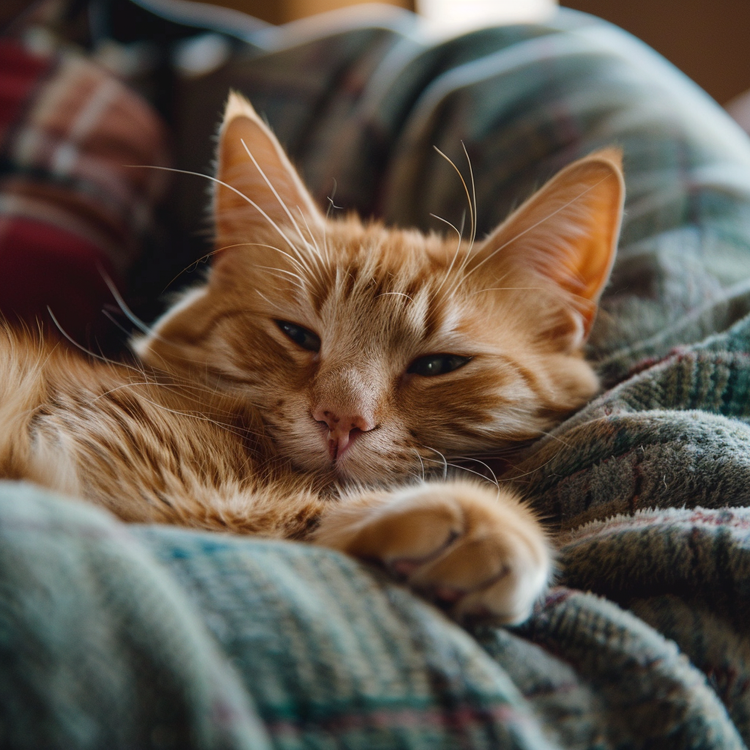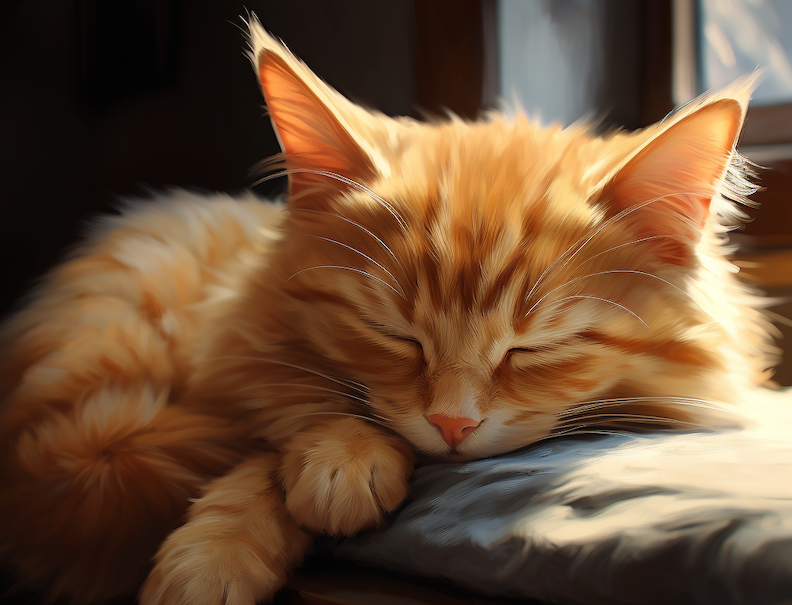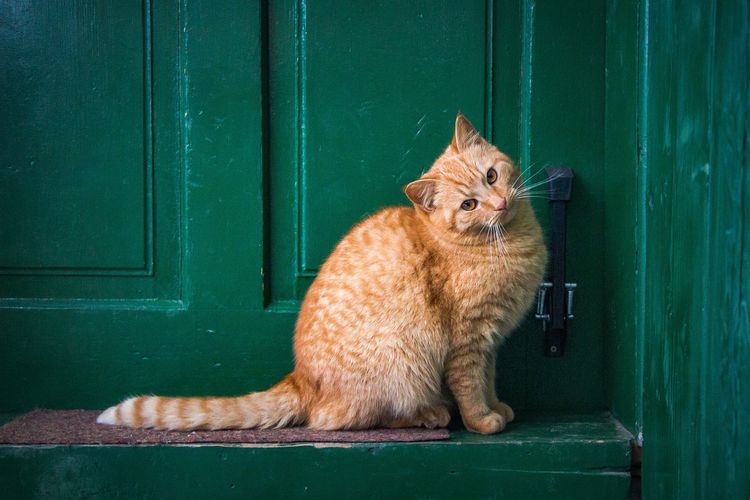Cat Communication: Meows, Purrs, and Body Language

Cats have a rich and diverse communication system that combines vocalizations, purring, and body language. Understanding the intricacies of cat communication is key to fostering a strong bond with our feline companions. In this blog post, we will explore the various ways cats communicate, from their meows and purrs to their nuanced body language. By decoding these signals, we can better understand and respond to their needs, emotions, and desires.
1. Deciphering Meows: What Your Cat Is Trying to Tell You:


Meowing is one of the most recognizable forms of vocal communication in cats. We will explore the different types of meows and their meanings, from the short and soft meow to the demanding and insistent meow. By paying attention to the context, tone, and frequency of meows, we can decipher what our cats are trying to convey, whether they are seeking attention, indicating hunger, or expressing discomfort.
- Short and soft meow: Often used as a greeting or a simple acknowledgement from your cat, indicating a calm and relaxed state.
- Insistent and demanding meow: A more intense and persistent meow may signify that your cat is seeking attention, food, or wants to be let outside.
- Drawn-out or plaintive meow: This type of meow is often associated with discomfort or dissatisfaction, indicating that your cat may be in pain, feeling anxious, or expressing a need for something specific. It's important to assess the overall behavior and body language alongside this meow to determine the underlying cause.
As we unravel the different types of meows and their meanings, we gain insight into our cats' desires and emotions. But meowing is just the beginning of their captivating communication repertoire.
2. The Soothing Power of Purrs: Understanding Contentment and More:


Purring is a unique and comforting sound produced by cats. We will delve into the meaning behind purring and its various contexts. While purring is often associated with contentment and relaxation, cats may also purr when they are in pain, stressed, or seeking comfort. By understanding the different situations in which cats purr, we can better gauge their emotional state and provide appropriate support and care.
- Contentment and relaxation: Purring is commonly associated with a cat's state of contentment and relaxation. When your cat purrs in your presence, it signifies their comfort and trust in you.
- Seeking comfort and security: Cats may also purr when they are in pain, stressed, or seeking comfort. Purring can serve as a self-soothing mechanism, helping them cope with discomfort or anxiety.
- Healing and bonding: Scientific studies suggest that the vibrations produced during purring may have healing effects on both cats and humans. Purring can promote relaxation, reduce stress, and strengthen the bond between cats and their human companions. Understanding the contexts in which cats purr allows us to provide the necessary support and care they require.
Differentiating between a cat purring out of contentment and relaxation versus purring due to pain, stress, or seeking comfort can be challenging but not impossible. Here are some key factors to consider when trying to interpret a cat's purring:
Body Language:
- Pay attention to your cat's overall body language. If they are purring while exhibiting relaxed postures, such as a loose body, half-closed eyes, and gentle, slow movements, it is likely a sign of contentment and relaxation. Conversely, if their body appears tense, they are hiding, or showing signs of discomfort, it may indicate that the purring is related to pain, stress, or seeking comfort.
Vocalizations and Other Behaviors:
- Observe if there are any accompanying vocalizations or behaviors that might provide additional context. Cats purring contentedly often exhibit calm and peaceful behaviors, such as kneading, gentle head butts, or a relaxed tail position. Conversely, if a cat is purring due to discomfort or stress, they may show signs of distress, restlessness, hiding, or exhibit defensive behaviors such as growling or hissing.
Environmental Factors:
- Consider the current environmental conditions and recent events. Cats may purr contentedly when in familiar and safe environments, with their basic needs fulfilled. However, if there have been changes, such as recent vet visits, conflicts with other animals, or changes in their routine, their purring could be a response to stress or seeking comfort.
Veterinary Assessment:
- If you suspect your cat is purring due to pain or discomfort, it is advisable to consult with a veterinarian. A professional examination can help identify any underlying health issues contributing to the cat's behavior and determine the appropriate course of action.
Remember, each cat is an individual, and their behaviors and purring patterns can vary. It's crucial to consider their unique personality, history, and the overall context of their behavior to make a more accurate assessment. By closely observing their body language, vocalizations, and the surrounding environment, you can gain valuable insights into whether your cat's purring stems from contentment and relaxation or other factors requiring attention and care.
3. Body Language: The Silent Conversation:



A cat's body language speaks volumes about their feelings and intentions. We will explore key elements of feline body language, including tail positions, ear positions, eye contact, and postures. From the confident and relaxed body language to signs of fear or aggression, understanding these visual cues helps us interpret a cat's mood, level of comfort, and potential warning signs. By observing their body language, we can better communicate and respond appropriately to our feline companions.
Tail Positions:
- Cats communicate a range of emotions and intentions through their tail positions. A relaxed and upright tail often indicates a confident and content cat. A slowly swaying tail can express curiosity, while a twitching or lashing tail may signal agitation or annoyance. A puffed-up or bushy tail is typically a defensive or aggressive posture.
Ear Positions:
- Cats' ear positions provide important cues about their mood. When the ears are forward and slightly tilted, it indicates attentiveness and curiosity. Flat or backward ears suggest fear, aggression, or discomfort. Half-flattened ears can indicate uncertainty or unease.
Eye Contact:
- Eye contact is significant in cat communication. Direct eye contact, with relaxed eyes and slow blinking, is a sign of trust and affection. Dilated pupils can indicate excitement or fear, while narrowed pupils may suggest aggression or discomfort. Staring or prolonged intense eye contact can be seen as a challenge or threat.
Postures:
- Cats use various body postures to communicate their feelings and intentions. A confident and relaxed cat typically has a loose and fluid body posture. They may stretch out, lie on their back, or expose their belly. Tense or hunched body postures may indicate fear, stress, or aggression. Crouching low to the ground with a lowered head and tail tucked between the legs often signifies submission or an attempt to avoid conflict.
Vocalizations and Body Language:
- Cats often combine vocalizations with specific body postures to convey their messages more effectively. For example, a cat may arch their back, raise their fur, and hiss as a defensive posture. Meowing with an arched back and elevated tail can indicate a desire to establish dominance or territoriality. Understanding the synergy between vocalizations and body language provides deeper insight into a cat's intentions and emotional state.
Tail Flicking:
- Cats often communicate through tail flicking. A quick, repetitive flicking motion can indicate annoyance or agitation. A slow and deliberate tail swish may signify excitement or anticipation. However, it's essential to consider other accompanying body language and the overall context to interpret tail flicking accurately.
4. The Power of Whiskers: Sensory Tools and Social Signals:


Whiskers are not just decorative—they play a significant role in a cat's communication. We will discover the purpose of whiskers, how cats use them for spatial awareness and navigation, and their role in social interactions. Understanding whisker positions and movements allows us to interpret a cat's comfort level, curiosity, and even their receptiveness to interaction. By respecting their whiskers, we can enhance communication and create a safe and comfortable environment for our cats.
- Spatial Awareness and Navigation: Whiskers serve as essential sensory tools for cats, helping them navigate their surroundings with precision. They are sensitive to touch and provide valuable information about objects' proximity, allowing cats to navigate narrow spaces, judge distances, and avoid potential obstacles.
- Social Signals and Comfort Level: Cats also use their whiskers as social signals during interactions with other cats and humans. When a cat's whiskers are forward and relaxed, it often indicates a state of comfort and curiosity. Conversely, if the whiskers are pulled back against the face, it can be a sign of fear, stress, or discomfort. Understanding and respecting whisker positions and movements allows us to gauge a cat's comfort level and create an environment where they feel safe and at ease.
By understanding their purpose in spatial awareness, navigation, and communication, we can appreciate their significance in a cat's world and create an environment that respects and supports their whisker-related needs.
5. Non-Vocal Vocalizations: Hisses, Growls, and More:


While meowing and purring are primary vocalizations, cats also use non-vocal sounds to communicate. We will explore various non-vocal vocalizations, such as hisses, growls, chirps, and trills. These unique sounds convey different messages, from warning signals to expressions of excitement or playfulness. Understanding these non-vocal vocalizations adds depth to our comprehension of cat communication and strengthens our bond with our feline friends.
Hisses and Growls:
- Hissing and growling are defensive vocalizations that cats use to express fear, aggression, or a desire to establish boundaries. These sounds serve as warning signals to potential threats or perceived intruders, indicating a need for caution and respect.
Chirps and Trills:
- Chirps and trills are non-vocal vocalizations that cats use to communicate a range of positive emotions, such as excitement, greeting, or seeking attention. These gentle and melodic sounds are often directed towards humans or other friendly cats, reflecting a desire for social interaction and connection. Understanding these joyful vocalizations helps us engage in playful and affectionate exchanges with our feline companions.
Hissing:
- Hissing is a defensive vocalization used by cats to express fear, threat, or discomfort. It serves as a warning signal to deter potential threats or perceived dangers. Hissing is often accompanied by an arched back, fluffed-up fur, and bared teeth, indicating that the cat is feeling defensive and ready to protect itself.
Growling:
- Growling is another defensive vocalization that cats employ when they feel threatened or stressed. It is a low, guttural sound produced as a warning to communicate their discomfort and desire for space. Growling may be accompanied by a stiff body posture, flattened ears, and a defensive stance, indicating that the cat is prepared to defend itself if necessary.
6. Vocalizing with Body Language: When Meows Meet Postures:


Cat communication is not limited to vocalizations or body language alone. Cats often combine their vocalizations with specific body postures to convey their messages more effectively. We will explore how cats integrate meows with various body positions, such as arching their back, lowering their body, or adopting a defensive stance. Understanding the synergy between vocalizations and body language provides deeper insight into a cat's intentions and emotional state.
Arched Back and Tail:
When a cat combines meowing with an arched back and an elevated, bristled tail, it typically indicates a defensive or aggressive posture. This combination suggests that the cat is feeling threatened or attempting to establish dominance.
Lowered Body and Tail:
- If a cat meows while simultaneously lowering their body close to the ground, tucking their tail between their legs, and potentially flattening their ears, it often signifies fear or submission. This combination of vocalization and body language indicates that the cat is trying to convey a sense of vulnerability or a desire to avoid conflict.
Defensive Stance and Hissing:
- Cats may vocalize through hissing while assuming a defensive stance, such as crouching low to the ground, with their fur standing on end, and their tail puffed up. This combination communicates a clear warning to back off and signifies the cat's readiness to defend itself if necessary.
7. Understanding Context: Tailoring Communication Interpretation:


While decoding cat communication is valuable, it's important to consider the context in which these behaviors occur. Every cat is unique, and their communication may vary depending on their personality, past experiences, and the specific situation at hand. We will emphasize the significance of considering context when interpreting cat communication. By observing the environment, the cat's history, and the accompanying cues, we can gain a more accurate understanding of their communication and respond accordingly.
Environment and Surroundings:
- The environment in which a cat communicates plays a significant role in interpreting their behavior. Factors such as the presence of other animals, changes in their surroundings, or the availability of resources can influence how a cat communicates. Consider the specific environment and any recent changes that may impact their behavior and communication cues.
Individual Personality and Past Experiences:
- Each cat has a unique personality shaped by their past experiences. Their communication style may vary based on their individual preferences, previous interactions, and socialization. Understanding your cat's personality traits and considering their past experiences can provide valuable insights into their communication patterns and help tailor your interpretation accordingly.
Accompanying Cues and Body Language:
Cat communication is not limited to a single behavior or vocalization. It is essential to observe and analyze the accompanying cues, including body language, facial expressions, and other behaviors. By considering the overall context and combining multiple communication signals, we can form a more accurate understanding of what our cats are trying to convey.
Response to Communication:
Pay attention to how your cat responds to your attempts at communication. Cats provide feedback through their own behaviors and reactions, indicating whether they are comfortable, receptive, or in need of a different approach. By observing their responses, you can adjust your communication style to better meet their needs and preferences.
Consultation with Professionals:
If you encounter challenges in interpreting your cat's communication or have concerns about their behavior, consulting with a veterinarian or animal behaviorist can provide valuable guidance. These professionals can help assess your cat's specific circumstances, offer insights into their communication style, and provide tailored advice to enhance your understanding and strengthen your relationship with your feline companion.
Cat communication is a multifaceted system encompassing vocalizations, purring, and body language. By decoding their meows, understanding the nuances of purring, interpreting their body language, respecting their whiskers, and recognizing non-vocal vocalizations, we gain valuable insights into our cats' emotions, needs, and desires. This understanding allows us to respond appropriately, foster a strong bond, and create a harmonious environment where our feline companions can thrive. So let's embrace the fascinating world of cat communication and embark on a journey of deeper connection with our beloved cats.


